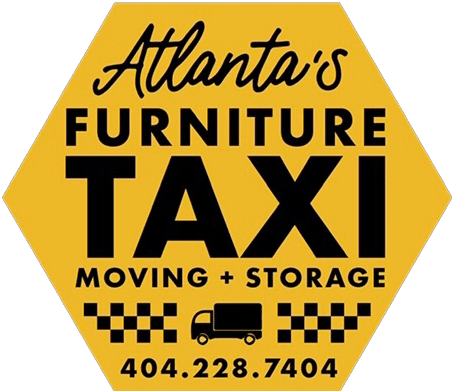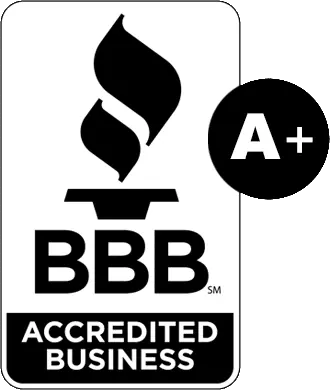Proper preparation is vital when it comes to how to prepare and move furniture. Effective preparation helps prevent damage, reduces stress, and ensures a smooth moving process. DIY moves often present challenges such as:
- Transporting large and bulky items
- Potential for damages to furniture and property
- Physical strain and risk of injury
Effective preparation involves several key steps:
Cleaning: Ensuring that your furniture is clean can prevent scratches and grime transfer during the move.
Measuring: Measuring doorways, hallways, and the dimension of your furniture helps avoid obstacles during transportation.
Packing Supplies: Utilizing proper packing supplies like moving blankets, bubble wrap, and plastic stretch wrap provides necessary protection.
For more detailed tips on preparing for a local move, refer to this ultimate guide from Atlanta Movers. Finding the best mover is crucial for a successful relocation; check out this guide on identifying reliable movers for expert tips from Atlanta Movers.
By following these steps and considering professional help when required, you can ensure a safe and efficient move.
1. Planning Your Move
Assessing Your Moving Needs and Timeline
Start by determining the scope of your move. Evaluate the number of items, their sizes, and any special handling requirements. Establish a timeline that includes key milestones such as packing, moving day, and unpacking. Early planning helps avoid last-minute stress and ensures you have adequate time to gather necessary supplies.
Choosing Between DIY Move vs. Hiring a Moving Company
Deciding whether to undertake a DIY move or hire professionals depends on several factors:
Budget: DIY moves are generally cheaper but come with the risk of potential damage.
Time: Professional movers can expedite the process.
Complexity: Large or fragile items may require expert handling.
For valuable items like antiques, you might benefit from expert advice on packing and transit to ensure their safe and secure relocation.
Creating a Checklist for Moving Supplies and Tools Needed
A well-organized checklist is essential for a smooth move. Essential items include:
Packing Supplies: Moving blankets, bubble wrap, plastic stretch wrap.
Tools: Screwdrivers, pliers, measuring tape.
Moving Equipment: Dolly, hand truck.
Consider eco-friendly options for a sustainable move such as following this Zero-Waste Moving Guide, which covers everything from zero-waste packing to carbon-neutral transportation.
For those who prefer professional help but want to manage costs, investigate referral programs offered by moving companies. These programs can help you find trusted movers within your network while saving money on your move.
2. Essential Moving Supplies
When preparing for a move, having the right packing supplies for moving furniture is crucial. Here’s an overview of what you need:
Essential Packing Supplies
Moving Blankets: These provide a thick layer of padding to protect your furniture from scratches and dents.
Bubble Wrap: Ideal for wrapping delicate items like glass table tops and ceramics.
Plastic Stretch Wrap: Helps secure upholstery on sofas and chairs, keeping them clean and protected during transit.
Importance of Furniture Pads
Using furniture pads during transport is essential to prevent damage. These pads act as a barrier between your furniture and the truck’s interior, reducing the risk of scratches, dents, and other damage.
Recommended Tools for Moving
Investing in the right tools can make your move much easier:
Dolly: A two-wheeled hand truck that helps you move heavy items like dressers and refrigerators with ease.
Hand Truck: Ideal for stacking and transporting boxes or smaller pieces of furniture.
For more tips on moving supplies, consider checking out Atlanta Furniture Movers’ blog for expert advice. Whether you’re looking for moving tips, guidance on post-move cleaning services, or insights into organizing the entire moving process, their blog has got you covered.
3. Preparing and Packing Furniture
Cleaning Furniture Before Moving
Cleaning your furniture is a crucial first step in preparing for a move. Dust and grime can cause scratches during transport, so it’s essential to clean thoroughly.
Wooden Furniture: Use a soft cloth and gentle cleaner to remove dust. Avoid using water as it can damage the wood.
Upholstered Pieces: Vacuum fabric surfaces to remove dirt and debris. For stains, a fabric cleaner might be necessary.
Measuring Doorways and Hallways
Before you start moving any furniture, measure all doorways, hallways, and stairways. This ensures that your pieces will fit through without damage.
Tips: Measure the height, width, and depth of both the furniture and doorways.
Consider removing doors or molding if the space is tight.
Dismantling Furniture for Easier Transport
Dismantling your furniture not only makes it easier to move but also reduces the risk of damage.
Steps: Remove legs from tables and sofas.
Take apart bed frames.
Label all parts and keep screws in sealable plastic bags.
Wrapping Delicate Items
Delicate items like glass tabletops or ceramics need extra care:
Glass Tabletops: Use bubble wrap extensively, securing with tape.
Ceramics: Wrap each piece individually with bubble wrap or packing paper. Place them in sturdy boxes with cushioning material.
Using Plastic Wrap for Upholstered Pieces
Plastic wrap is ideal for protecting upholstered furniture from dirt and moisture:
Steps: Cover the entire piece with plastic wrap, paying special attention to corners.
Secure with packing tape if necessary.
For wooden furniture, avoid direct contact with plastic wrap as it can cause condensation that damages the wood. Instead, use moving blankets or furniture pads as a protective layer before wrapping in plastic.
Packing Small Items in Sealable Plastic Bags
Small items like screws, bolts, or remote controls should be packed separately in sealable plastic bags:
Labeling: Clearly label each bag with its contents and which piece of furniture it belongs to.
To make your move even more hassle-free, you can explore practical tips on how to pack like professionals provided by Atlanta Furniture Movers.
For a stress-free moving day, follow these essential strategies shared by Atlanta Furniture Movers.
By following these steps, you can ensure that your furniture remains protected throughout the moving process. And if you’re in Kennesaw, don’t hesitate to contact Atlanta Movers, a family-owned and operated business serving the Kennesaw community for all your moving needs.
4. Loading, Moving, and Unloading the Furniture
Efficiently loading your moving truck can save time and prevent damage to your furniture. Here are some tips to help you with the process:
Load Heavier Items First: Start by placing heavier items like sofas and dressers at the back of the truck.
Secure Your Items: Use tie-downs at multiple points to ensure nothing shifts during transit.
Utilize Ramps: Using ramps can make loading and unloading safer and easier, especially for bulky items.
Clear Pathways: Clear doorways and entryways before you start moving furniture. This prevents tripping hazards and makes it easier to maneuver large items through tight spaces.
Rent Equipment: Consider renting equipment like dollies and hand trucks to move heavy pieces with ease.
Protect Your Floors: When moving furniture across hardwood or tile floors, use gliders to prevent scratches.
Seek Help if Needed: Don’t hesitate to ask friends or family members for assistance or hire labor-only movers for professional help without the full-service cost.
Tip Movers Appropriately: Follow proper etiquette when tipping movers based on factors like the length and difficulty of the move.
Efficient planning, utilizing appropriate equipment, and seeking professional assistance significantly ease the moving process, ensuring your furniture arrives at its new location in excellent condition.
If you’re planning a cross country move in Atlanta, it’s crucial to understand the cost factors and budgeting strategies involved for a seamless relocation experience.
5. Considering Moving Insurance
When planning a move, it’s important to give serious thought to moving insurance. This crucial step ensures the protection of your belongings throughout the entire process. Even with meticulous preparations, accidents can happen, and having insurance provides that much-needed peace of mind.
The Importance of Having Insurance Coverage
Protection Against Loss or Damage: Moving insurance covers potential damage or losses during transit. This security blanket ensures that you are not left to bear the cost of repairs or replacements.
Peace of Mind: Knowing your valuable items are insured reduces stress during the move.
Types of Insurance Options Available
Basic Carrier Liability: Often included in the moving package at no extra cost.
Covers a set amount per pound of damaged items, usually minimal.
Declared Value Protection: You declare the total value of your items.
The moving company charges a fee based on this value and offers compensation if items are damaged.
Full Value Protection: Comprehensive coverage where movers repair, replace, or offer cash settlement for damaged items.
Typically, more expensive but provides extensive protection.
Third-Party Insurance: Additional coverage through an external insurance provider.
Ideal for high-value items not adequately covered by standard options.
Understanding these options helps in choosing the appropriate coverage for your move. For instance, if you’re transporting fragile items, it’s also important to know the do’s and don’ts of packing fragile items for a safe move to avoid common pitfalls. Additionally, for more tips on ensuring a smooth transition to your new home, you might find our ultimate moving checklist guide useful. And if any damage does occur, learning how to repair furniture after relocation can be invaluable.
Being informed about moving insurance supports a well-protected and less stressful moving experience.
Conclusion
Applying the best practices for moving furniture ensures a smoother and safer relocation process. The best way to wrap furniture for moving involves using the right materials like bubble wrap, plastic stretch wrap, and moving blankets. This not only protects your valuable items but also prevents damage.
Using tools like dollies and hand trucks offers an easy way to move furniture while reducing physical strain. For those needing professional assistance, consider hiring a reputable moving company in Buford which is well known for its exceptional service and deep roots within the Buford community.







